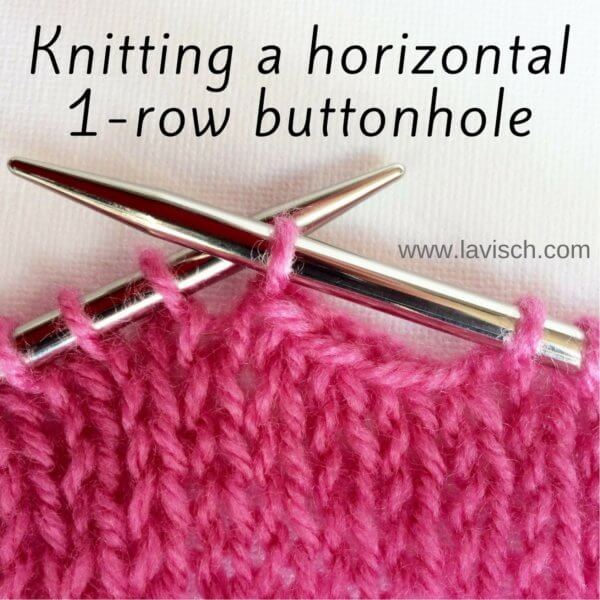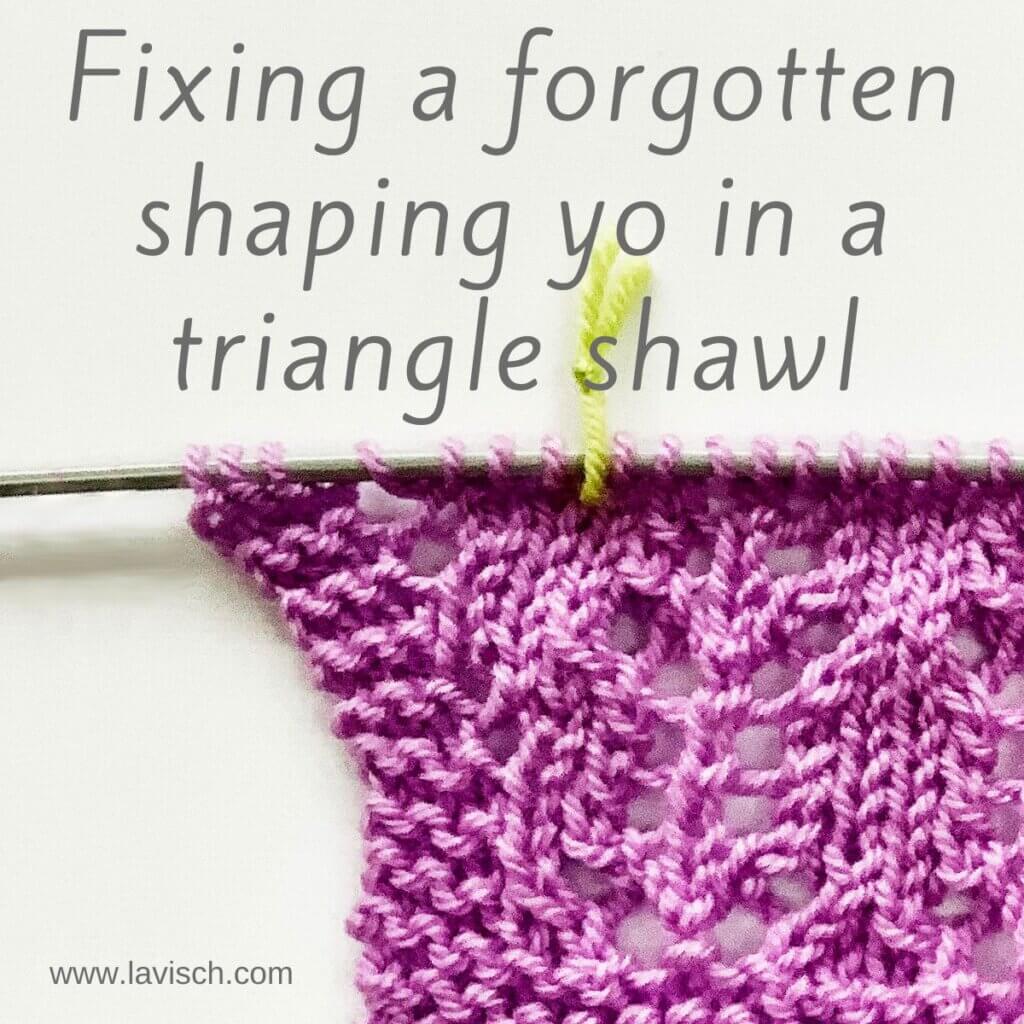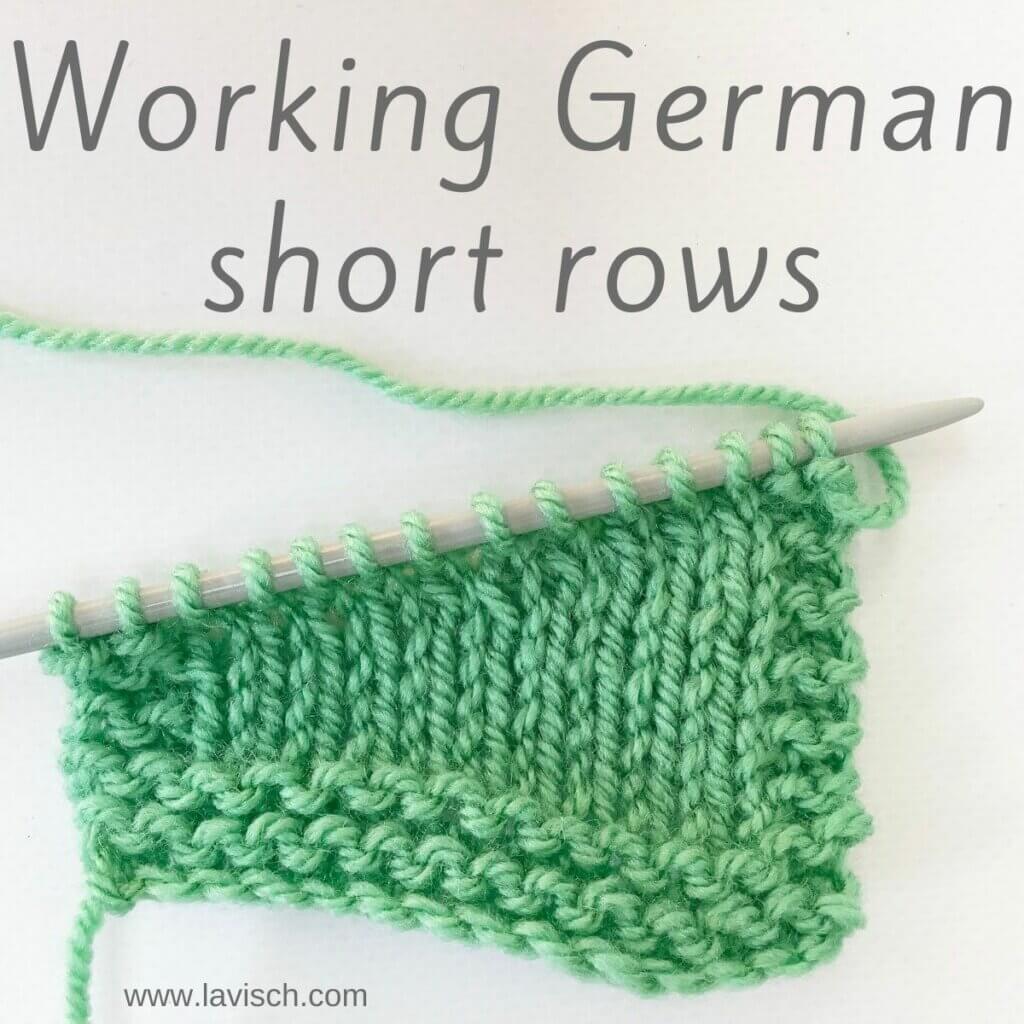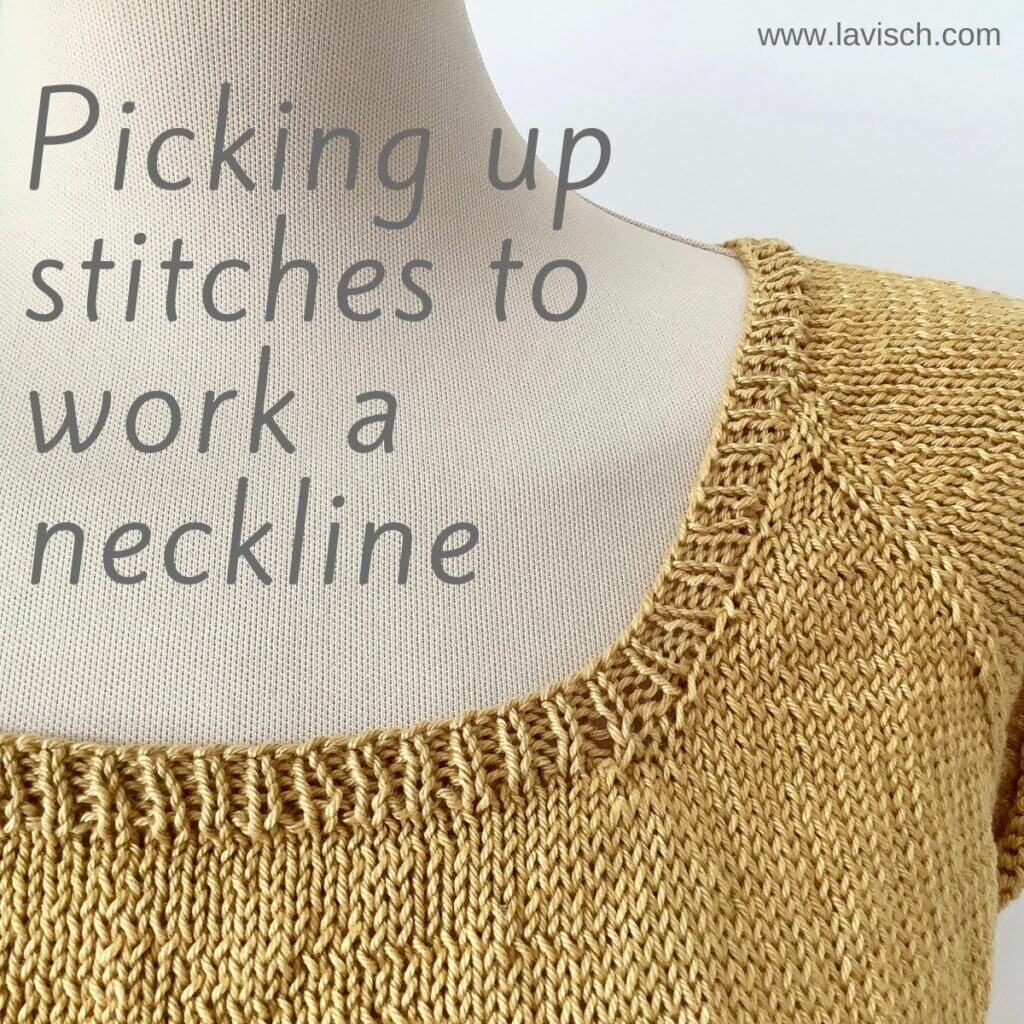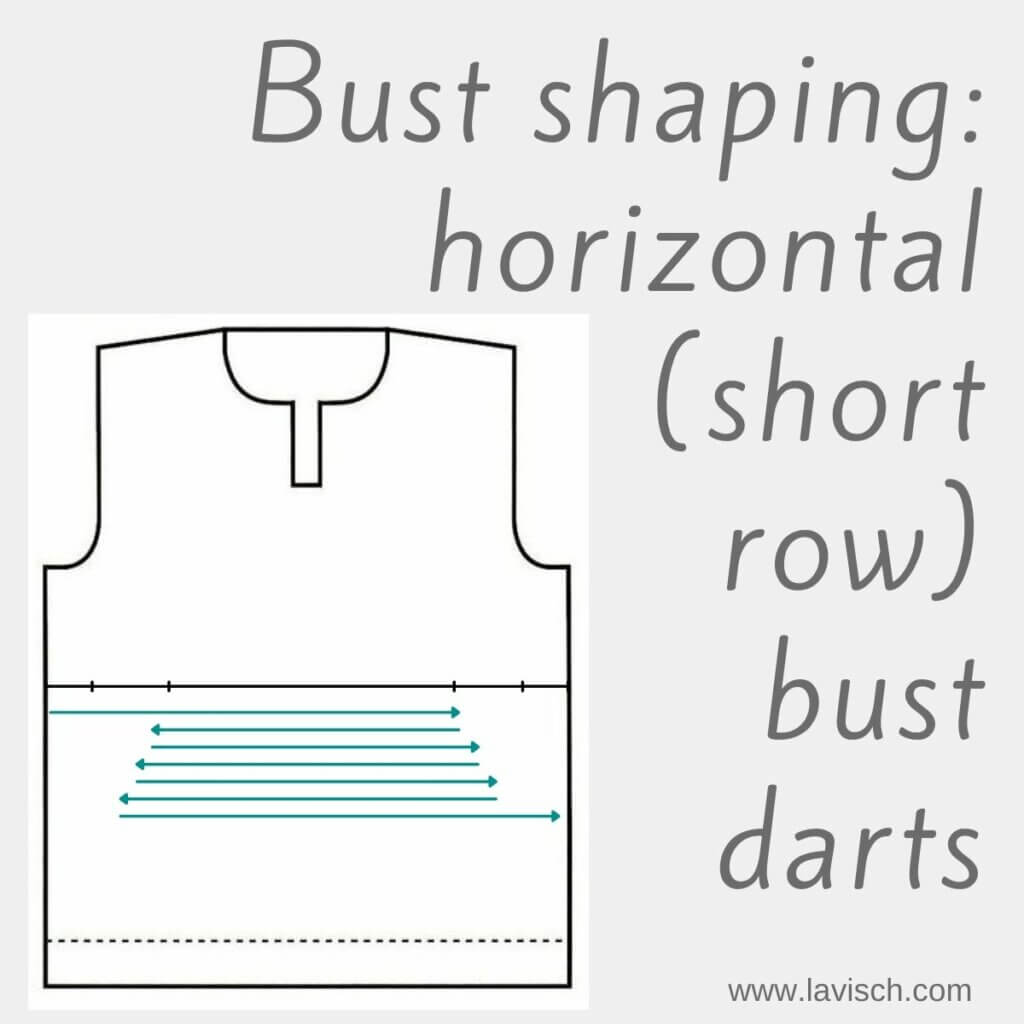
For larger-busted persons, bust shaping may be beneficial for optimal fit of a garment. In this two-part series on bust shaping, I’ll go into the nitty-gritty details on both vertical and horizontal (short row) bust shaping to help you achieve the perfect fit in your knitted garments for your body. In this part, I’ll focus on horizontal bust darts. The previous tutorial about vertical bust shaping can be found here.
What are darts?
In short, darts are a way to add in (or remove) fabric in a specific area, to accommodate the curves of the body underneath. In this tutorial, I focus on bust darts. However, you can also use darts to create more room for a tummy or buttocks, while highlighting the waist.
When talking specifically about horizontal darts, we mean the kind of darts that are worked horizontally. In other words: adding in rows of knitting to add additional length to the fabric in the place where it’s needed. In this case, at the bust. These short rows can be done working top-down or bottom-up, the approach is exactly the same. That said, my personal preference is to work garments top-down. So, that’s what I’ll use for illustrating the concept in this tutorial.
But first, we have to measure!
Measuring
We need to measure. Not only to determine whether you actually need to add horizontal bust darts, but also for how many rows. Sometimes, a sweater may ride up because a lack of width at the bust stretches the fabric in that direction. This causes it to shrink in the other direction. In that particular case, vertical bust darts would be the first modification to look into, because it’s usually easier to implement in an all-over stitch pattern, than short rows. Before we do any measuring, though, make sure you wear a well-fitting bra, because this will influence the resulting measurements.
To find the relevant vertical measurements, tie a piece of string around your waist, and measure from the “shoulder seam” to this string. First over the full bust as pictured below. Also note where both the upper bust and the full bust fall, when measured from the shoulder seam.
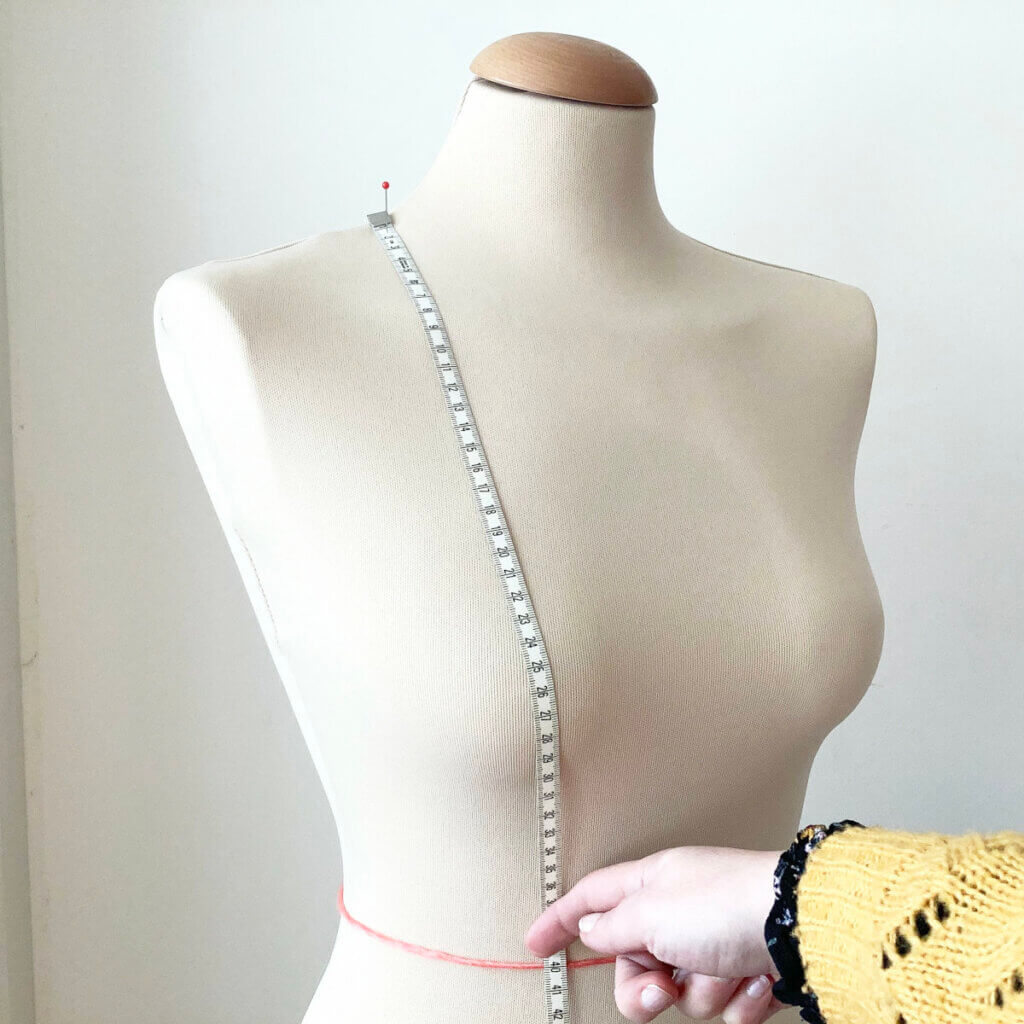
Next, measure again from the shoulder seam to the piece of string around the waist, but now at the side of the full bust. Alternatively, you can also measure from the shoulder seam to the waist at the back.
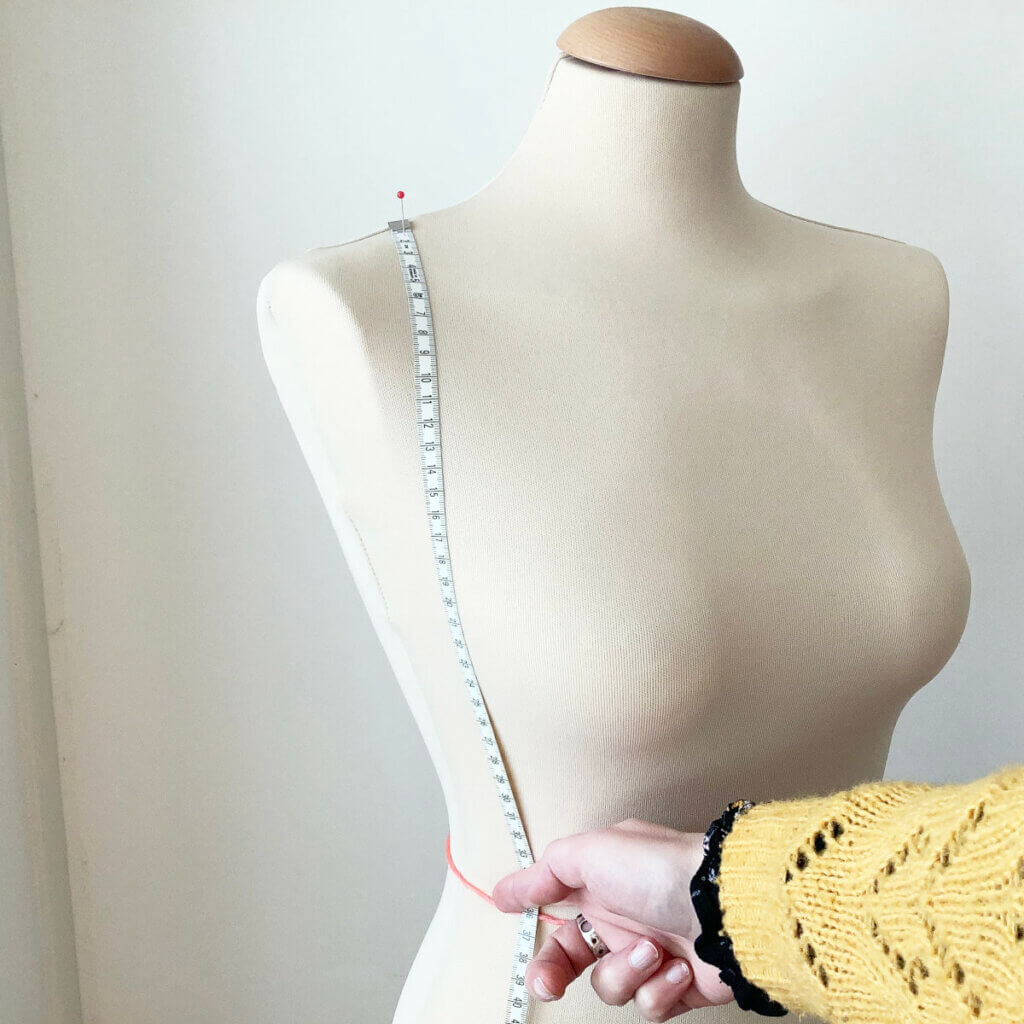
Now, on my mannequin there is not much difference between both measurements, only 4 centimeters or 1.57 inches. As a rule of thumb: if there is more than 5 cm (2 inches) of difference, horizontal bust darts would be beneficial. If the difference is less, the inherent stretchiness of knitted fabric is probably enough. Unless you’re making a garment with a lot of negative ease, of course.
The first relevant horizontal measurement we have to take, is the distance between the full bust points (“nipples”). To find this measurement, wrap the tape measure around the fullest part of your bust, keeping it level with the floor. In the picture below, the full bust points would be approx. at numbers 10 and 82 on the tape measure. Of course, here, I’m holding the tape measure all wrong to actually read the distance between those points.
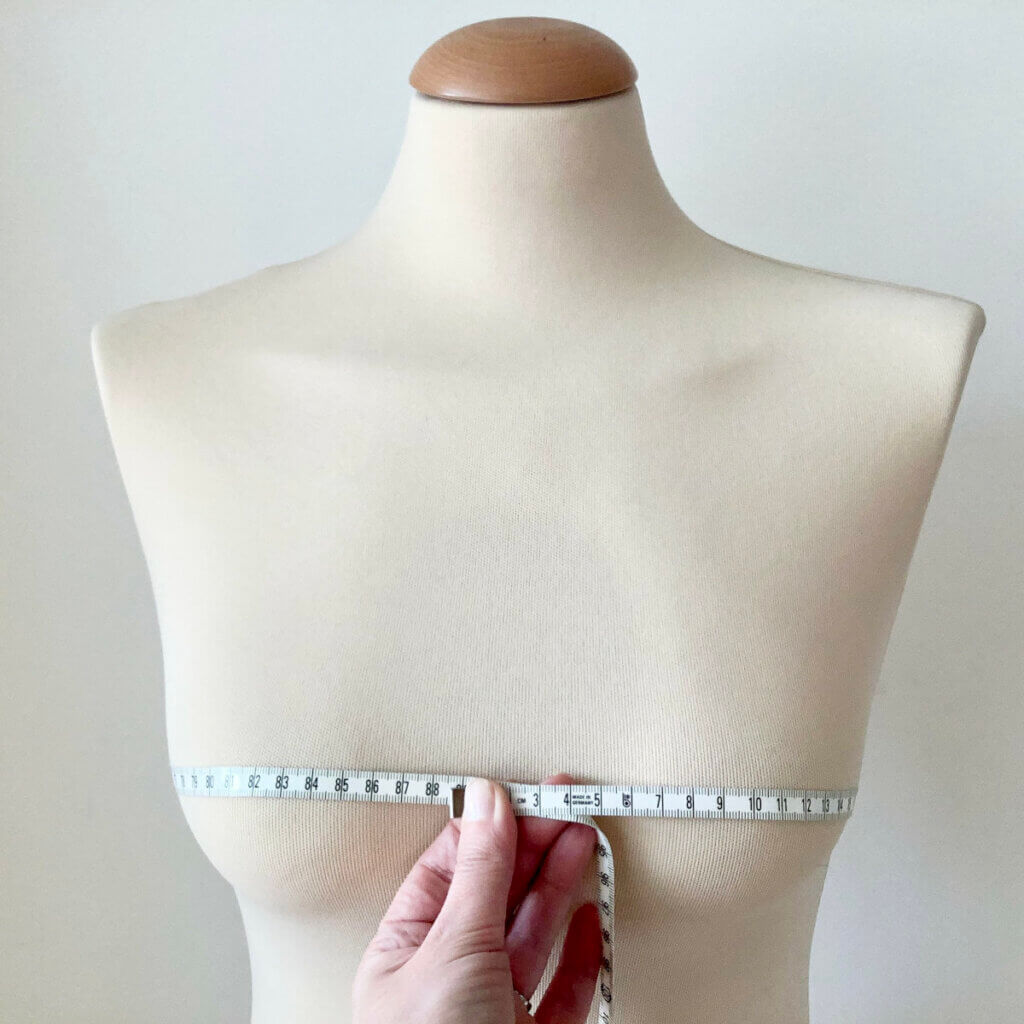
The second horizontal measurement we have to take, is the distance between the side seam, and the full bust point. This will help you determine how many stitches to work plain before turning the work.
Horizontal bust dart placement
As with all knitting, there are 2 dimensions to consider for optimal placement: the vertical and the horizontal one. For the vertical dimension – when to start the dart (in a top-down garment) – we really have to take a good look at your personal measurements as well as your gauge. You want to have the shortest pair of short rows at or just below the bust apex. But everyone’s full bust hits at a different vertical point, as is the case for the sweater’s sleeve separation. So I really can’t give you pointers in the sense of starting x cm or inches below sleeve separation. Fortunately, we have measured this!
For the horizontal placement of the bust dart, we also have some rules of thumb:
- The shortest pair of short rows should be at least 5 cm (2 inches) wider than the distance between the full bust points.
- The longest pair of short rows should be at least 2.5 cm or 1 inch from the side seam.
In the below schematic, I’ve pictured the various horizontal measurements:
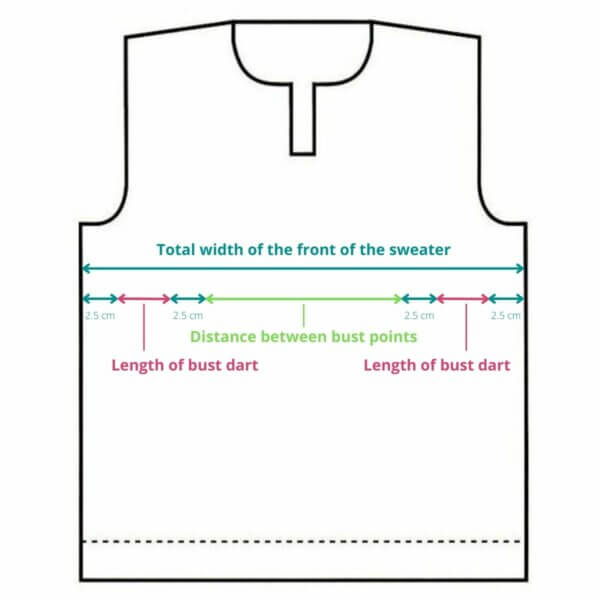
Horizontal bust dart worksheet
To plan out the bust darts, we will need to do a few calculations. These are based on the measurements we’ve taken and the gauge of our knitting.
A: Vertical measurement from shoulder seam to waist over the full bust: _____ i.e. size 45 cm or 12 inches.
B: Vertical measurement from shoulder seam to waist at the side of the bust or at the back: ____ (i.e. 37.5 cm or 9 inches)
C: Difference between A and B: ____ (i.e. 7.5 cm or 3 inches)
D: Calculate C (divided by 2.5 for measurements in cm) times the number of rows/rounds per 2.5 cm or per inch in your gauge: _____. This is the total number of short rows to add. Round up to the nearest even number if needed.
E: Divide D by 2 to get the number of turns at each side of the garment: ____
F: The vertical distance from shoulder seam to full bust: ____ (i.e. 27.5 cm or 11 inches)
G: The horizontal distance between the side seam and the nearest bust point: ____ (i.e. 15 cm or 6 inches)
H: Calculate G minus the desired horizontal distance for the short row turns, from both the side seam and the bust point (= 2.5 + 2.5 cm / 1 + 1 inches): ____ (i.e. 10 cm or 4 inches)
I: Multiply H with your stitch gauge to find your dart width: _____ This is the number of stitches to used to determine the distance (in stitches) between short row lengths.
J: Divide I by E to get the number of stitches between turns: _____
K: The horizontal distance between the bust points: ____ (i.e. 17.5 cm or 7 inches)
An example:
Say A is 45 cm, and my B is 37.5 cm. This means the difference (C) is 45 – 37.5 = 7.5 cm. With a row gauge of 24 rows / 10 cm (4 inches) or 6 rows per 2.5 cm (1 inch) I arrive at 18 short rows to add (D). This also means I will turn 9 times on each side of the bust (E). If the vertical distance from shoulder seam to full bust (F) is 27.5 cm (11 inches), this means I want to start my short rows a couple of rows or rounds later.
My G is 15 cm, and I want to keep the turns 2.5 cm (1 inch) from both the side seam and the nearest bust point. This means I have 15 – 5 = 10 cm (4 inches) to work and space the short row turns in, on each side of the bust (H). With a stitch gauge of 20 sts / 10 cm (4 inches) my (I) would be 20 sts. We already calculated that we had 9 turns to work on each side. In other words: my J = 20 divided by 9 = 2.2, meaning that we work a turn every 2 sts: every short row is 2 stitches longer (or shorter) than the previous one.
Also, working top down, we start with the shortest pair of short rows with a turning point at 2.5 cm (1 inch) or 5 sts on the outside of the full bust point. In this example, we also have 17.5 cm or 28 stitches between the full bust points. The longest pair of short rows will have its turning point at 2.5 cm or 5 stitches from the side seam.
Knitting your bust dart
To start, work a right-side row across the front of the garment to 2.5 cm (1 inch) on the outside of the bust point. Then use the short row technique if your preference, and turn the work. Next, work a wrong-side row across the front to the point 2.5 cm (1 inch) outside the other bust point. Again, turn, using your short row technique of preference.
Continue to work longer and longer rows across the front of the sweater. Each one longer than the previous one by the number of stitches calculated at J, until you have worked all the necessary short rows. You should have enough stitches in the last two short rows to go across to 2.5 cm (1 inch) of the side seam. Turn and work one final right side row across the middle and one side.
In the below image, I made a visual of this:
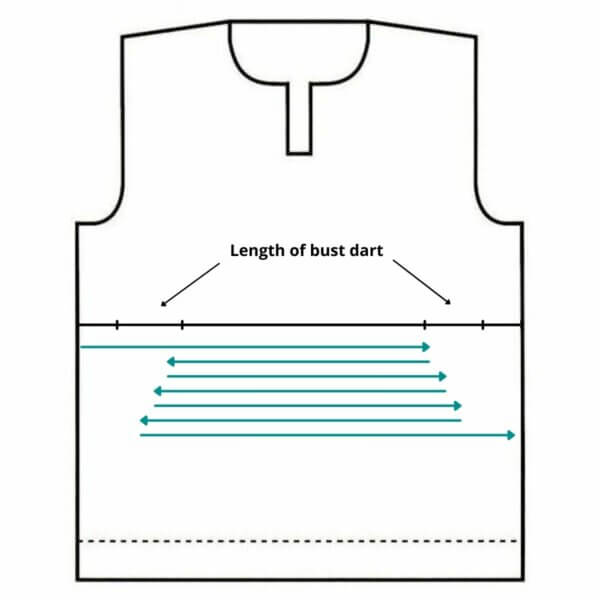
And with this, your short row bust dart is done, and you can continue with the rest of your garment!

Thanks to my Patreon supporters for bringing you this freebie! Creating quality patterns and tutorials is a lot of work and resource-intensive. However, I find it important to give you free content like this tutorial. Thanks to the generous support of my Patreon supporters, I can make it happen. Thank you, patrons! Click here to join, or click here to read more about La Visch Designs on Patreon.

